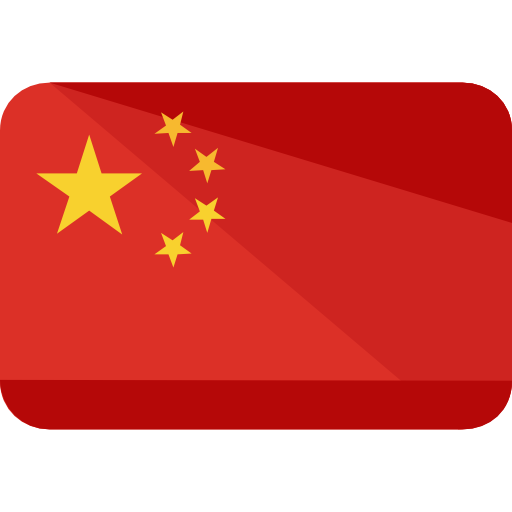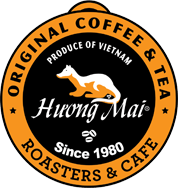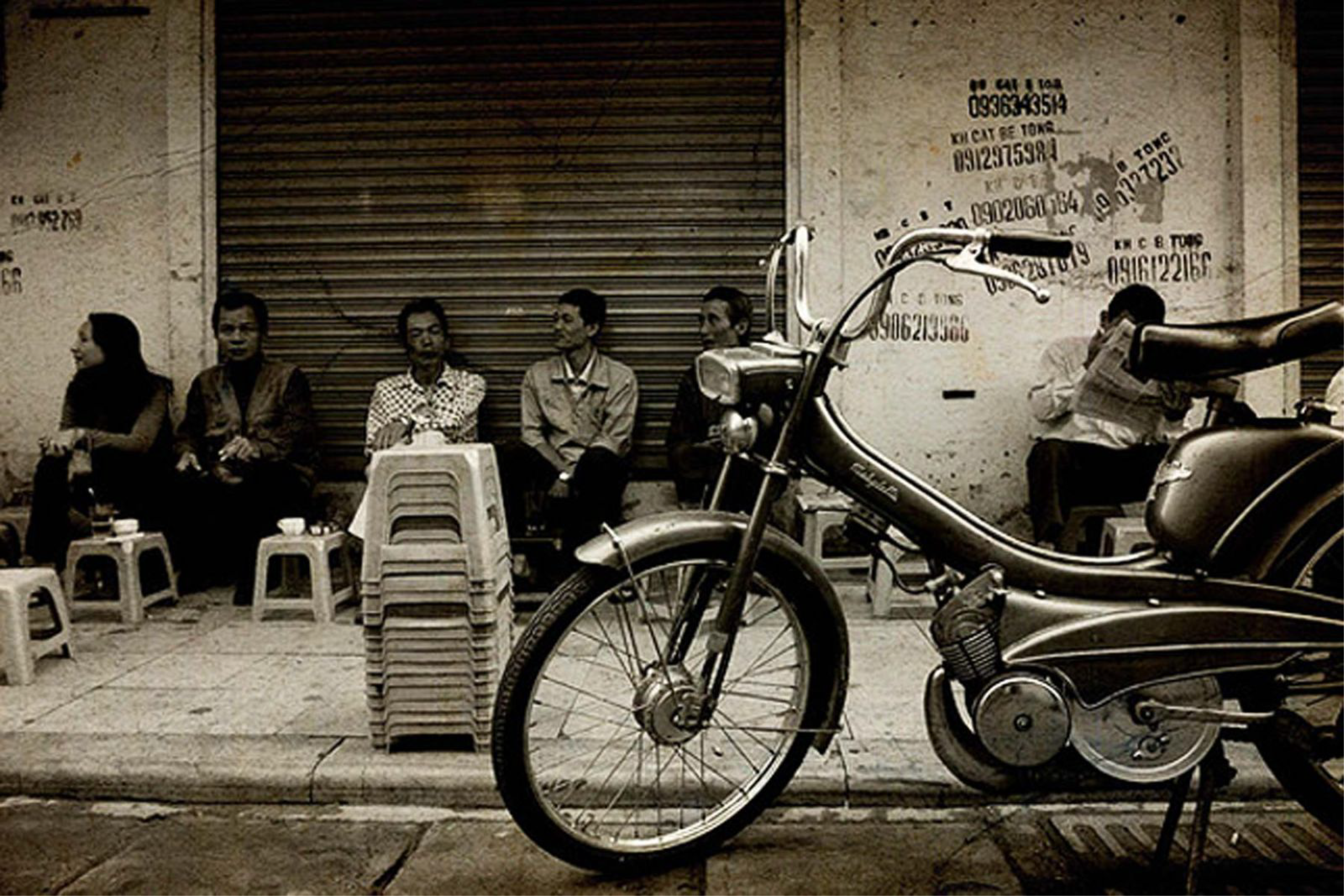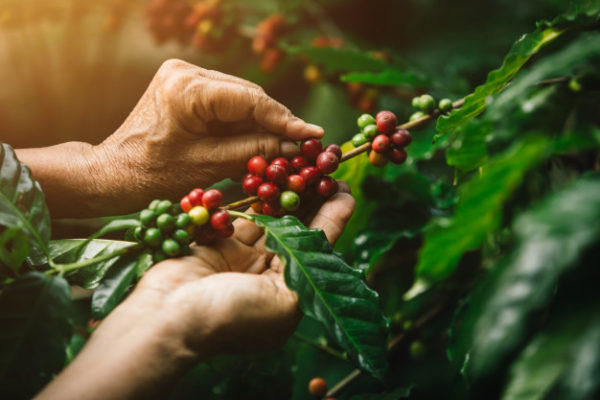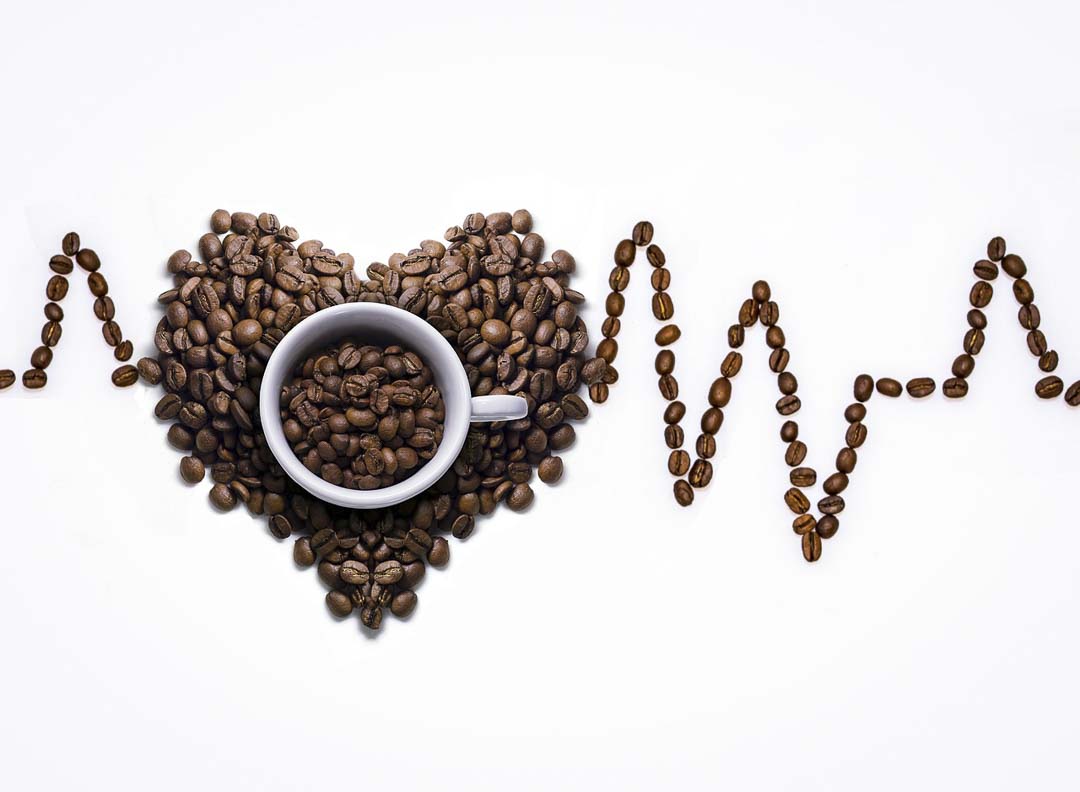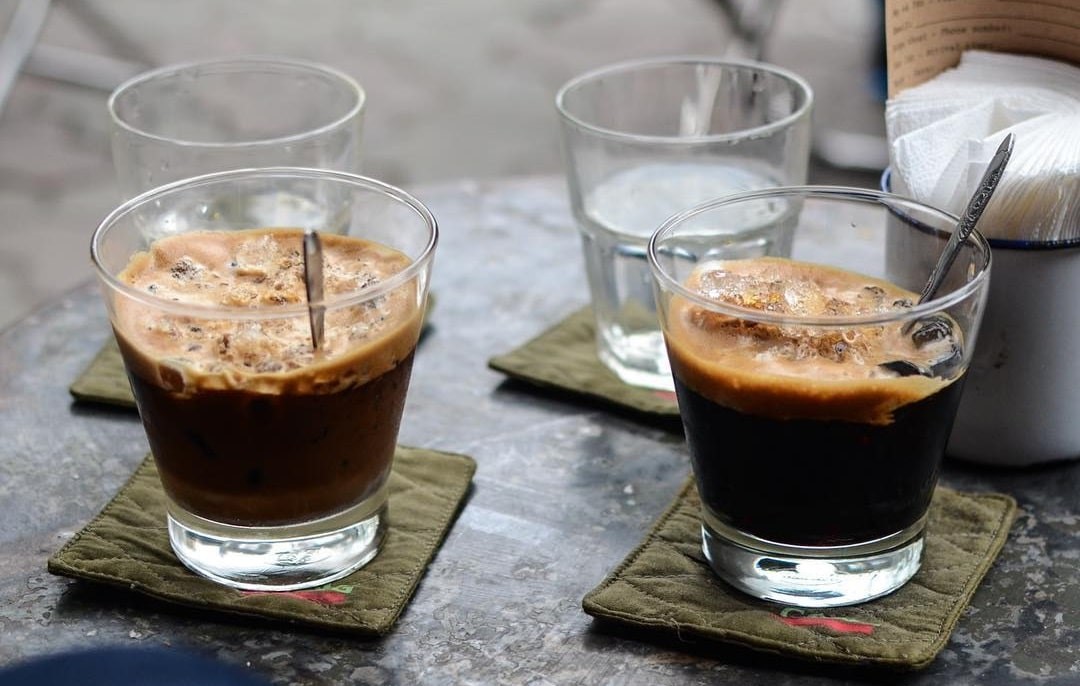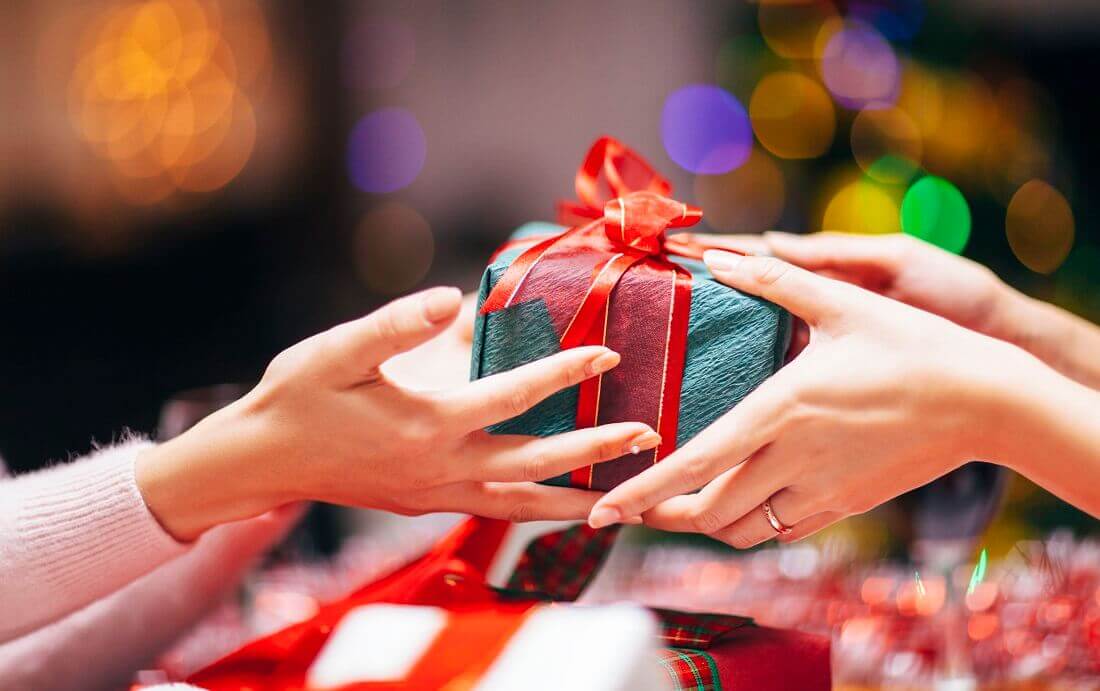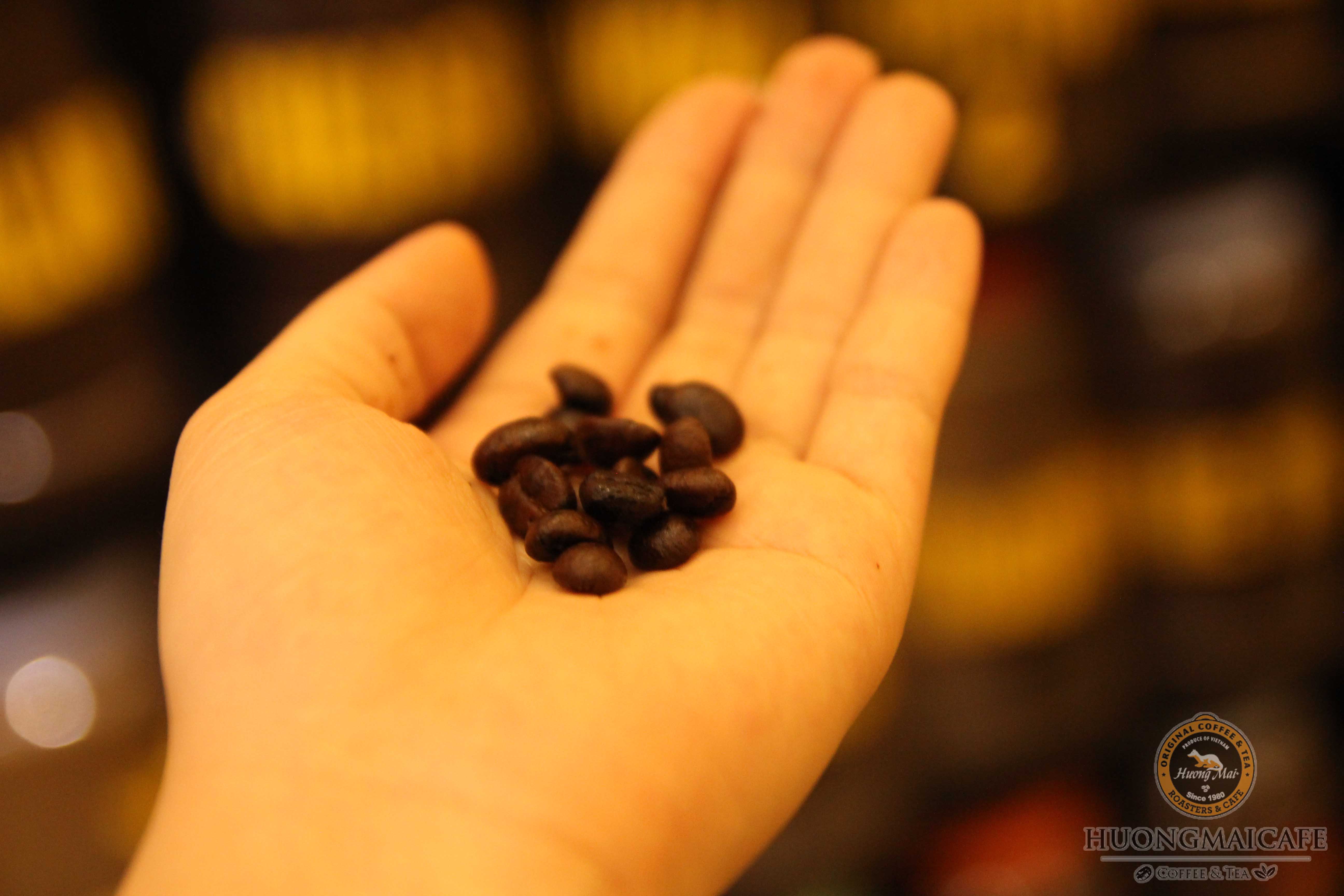Do you know the truth of Pure Coffee?
Do you know the truth of Pure Coffee?
How to know whether your brand new pack of coffee is a good, pure one or not? We will help you to figure it out.
The answer is pretty simple. Coffee has such a special type of bean which can be easily distinguish between the fake one and the pure, real one. To assure your healthiness and your taste buds, you really need to note down these tricks below.
I. Identify in the very first step - Coffee powder:
The volume of coffee is always heavier than one of soy beans and roasted corn flake. In roasting process, when the coffee reaches an ideal temperature, coffee powder will immediately swell up which makes coffee’s volume increase 1,5 to 2 times and total net weight decrease 20-30% than initial, therefore coffee’s net weight is always lower than other cereal’s one.
A pack of real and pure coffee is always bigger and lighter than the fake one even they are in the same net weight.
1. Coffee’s looseness:
Visually, pure coffee powder is very light with great looseness without any sight of sticky. You can easily identify real coffee after this experiment: Get a glass full of water, mildly pour coffee powder inside, if the powder tend to inflate then it’s a real, pure one and vice versa.
Because of its breakable figure that real coffee beans once grinded give out nice and fine powder, totally opposite to the fake one with roasted corn flakes or soy beans.
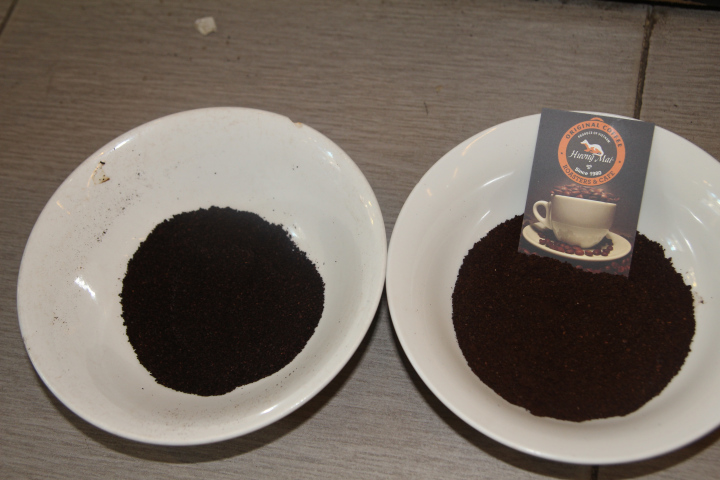
Coffee bean with nice looseness is pure coffee
2. Coffee powder’s wetness.
Pure coffee powder barely bear-water, or aqueous whilst others cereal powder tend to have great hydrous and moisture. Beside, due to the fact that cereal powder usually has no aroma, some coffee roasters use chemical and artificial aroma to mix with coffee powder, therefore mixed coffee is usually hydrous in visual and lumping, very different from the real one which is crumbly and porous.
Dry + porous = Real good coffee
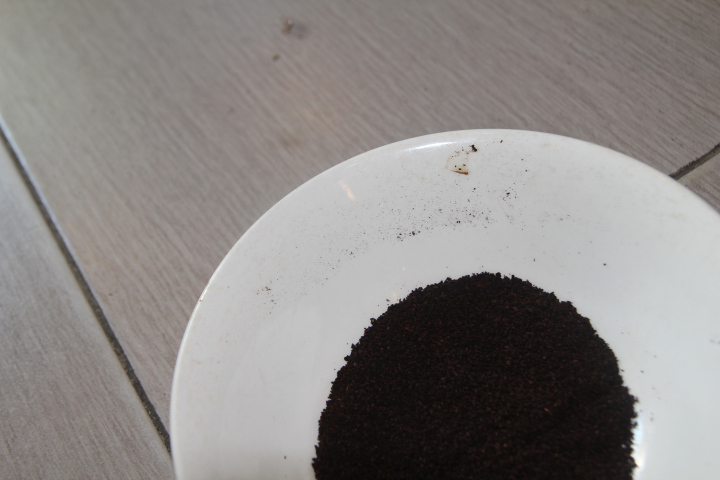
3. Color:
When coffee reaches an ideal temperature and time duration, coffee powder will turn into dark shade of brown (if the beans are under roast it will be yellowish with acridity and pungent odour), while roasted corn flake has a dark black color, and roasted soy bean is a shade between yellow and light brown, so basically you can base on the color of coffee to identify its quality.
Want a real coffee? Choose the dark brown one.
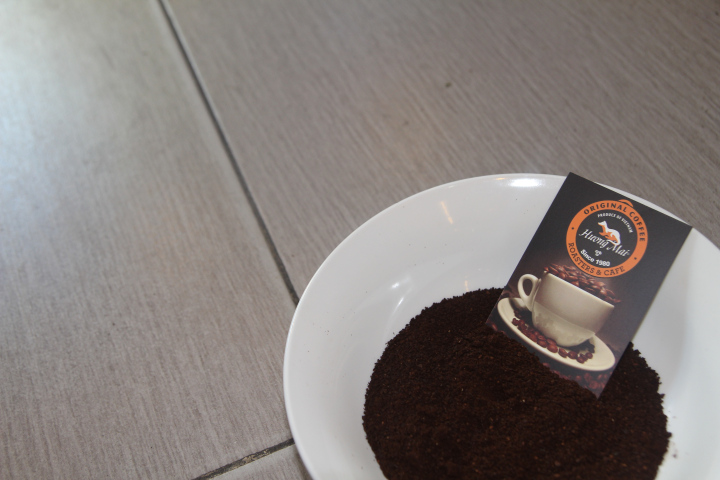
4.Powder’s odour:
This is the easiest way to find out fake coffee, if you are a coffee connoisseur. Swindler innovate their tricks everyday which makes it harder to spot an authentic coffee, however fake is fake, the fake one has an annoyingly intense aroma, with a scent of fishy which is derived from roast soy beans combine with chemical aromatise.
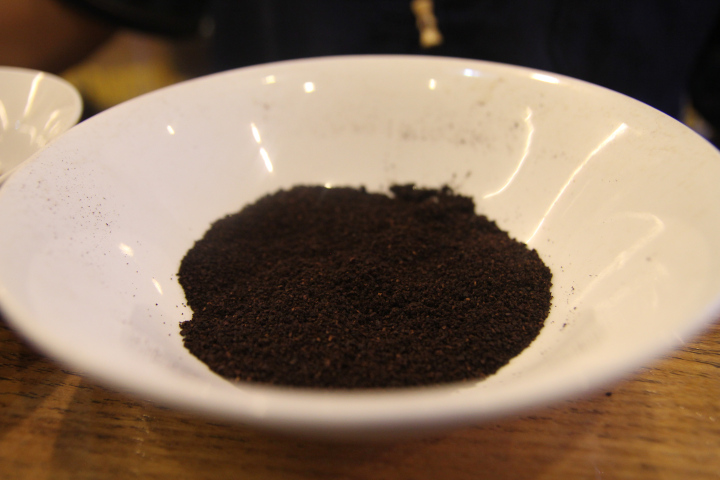
Only pure coffee has subtle scent
II. Identify while making – Coffee powder with boiled water:
One of million reasons makes me have such a hateful attitude toward Espresso machine is that it makes coffee too fast, before I could figure out the coffee is real or not then TING!, it’s done. Using Vietnamese traditional coffee press is longer in the wait but better in the taste, this I can assure without any hesitation. Like what we’ve known that coffee beans with hollow cellulose structure and low contain of amylase so common feature of roasted coffee is very loose and cohesionless due to cellulose breaking during roasting process, therefore when you pour boiled water into the cup, coffee powder will swell up, bubble up. In contrary, the fake one with cereal powder will flat down and emit very strong smell, once this happens you know your pack of coffee should find its new home in your basket, because it contains very little roasted coffee and a lot of chemical ingredients and cereal powder.
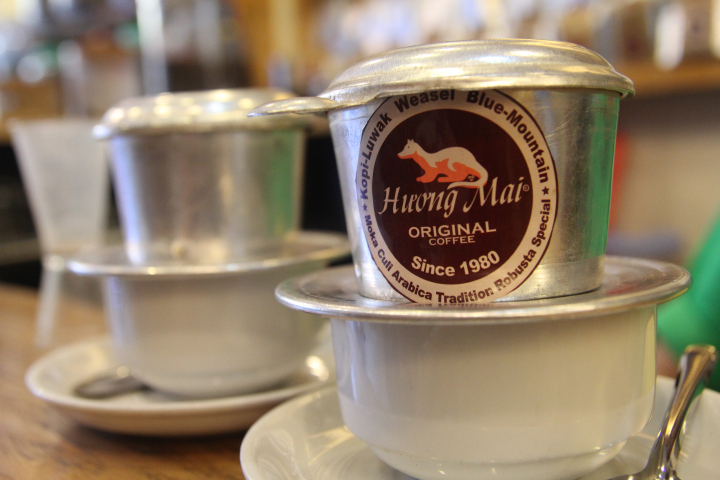
III. Identify after making – Spot a cup of real coffee:
- Color:
Coffee has such a strange kind of bean, no matter how long you roast it or how high is your roasting temperature, once you grind it and make a cup from it, the color could never be black. A cup of real and healthy coffee is always in the shade from light brown to dark brown, adding ice would create sparkling brown color. I just can’t understand why people tend to have a black, pure black “coffee” like that instead of this tempting brown coffee, visually, don’t we have to consider food with black color? A cup of light brown is so much cleaner, safer and absolutely more tasty than the black one.
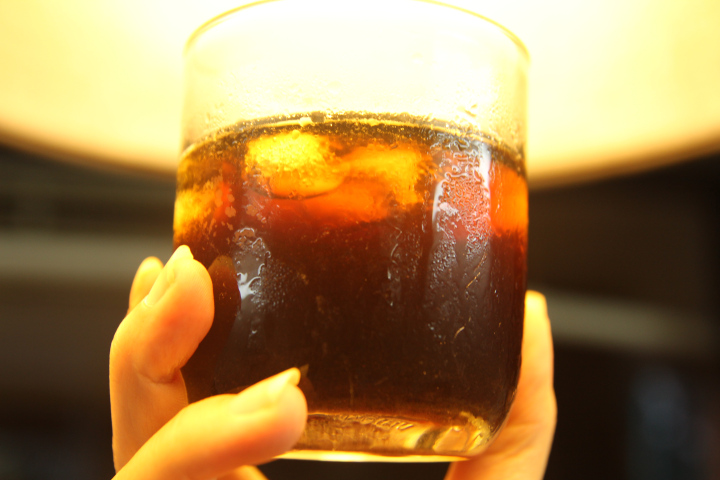
2.Viscidity:
Pure coffee has very low viscidity, but opposite to fraud one, which contain a lot of amylase, water comes out very viscous and sticky. Some people have a notion comes from nowhere that real coffee is the coffee with its water stick to the glass and ice cubes turn into brown. This is wrong in every way, real coffee is no-stick, and no viscous.
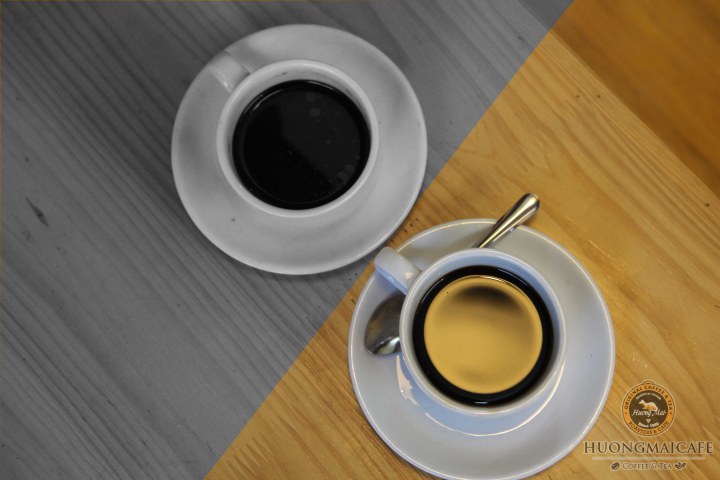
3. Aroma:
The hardest way to distinguish, however if you are a real coffee drinker then there would be no problem, but for the mass, I recommend you shouldn’t “smell it to know whether it’s fake or not”. Really shouldn’t.
4.Taste:
You know your coffee is perfectly roasted when it brings you a tempting bitterness and mildly acidity. The best breed of coffee is Arabica bean, generally sold under the name Arabica coffee because of its wonderful mix of bitter and sour taste. There is trend lately that coffee without acidity is real coffee, so many and many coffee roasters add bitterizer chemical to eliminate all the bitterness from the coffee.
5.Bubbles:
Coffee itself when shaken with sugar or condense milk would make out a little bit bubble, but due to some non-sense standards, people prefer coffee with beautiful bubble which is amazingly thin, rainbow sparkled. Let me tell you this, this type of “bubble” is created because of foaming chemical that roasting swindler put into the coffee. Typical coffee bubble is even in size, turbid, thick and pop up quickly.
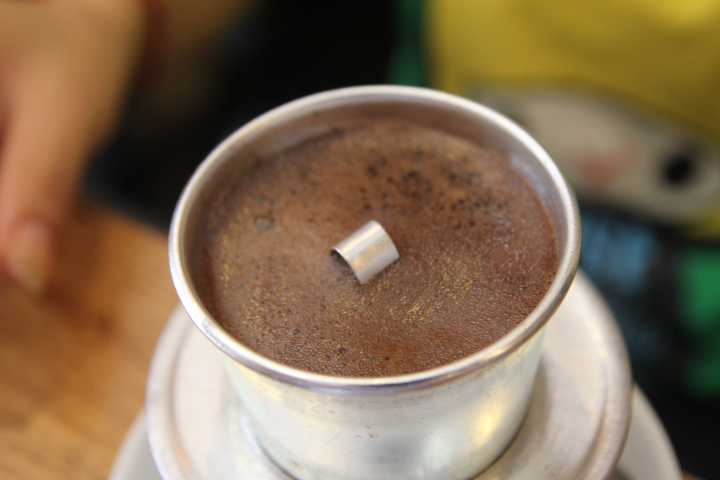
IV. Identify by your own experience:
I think this is the easiest way after all, however nothing could compare to your own experience, all the tricks I show you upward are what I’ve sum up after countless cups of coffee for all these years. They are based on not only my own knowledge of coffee but also from a lot of my friends, who are all my coffee mates. My favorite is Weasel coffee, a typical Vietnamese traditional coffee, and I’m thinking about writing down a new review on this term. Anyway, how about yours? Tell me your story, I would love to enrich my scope on this field.
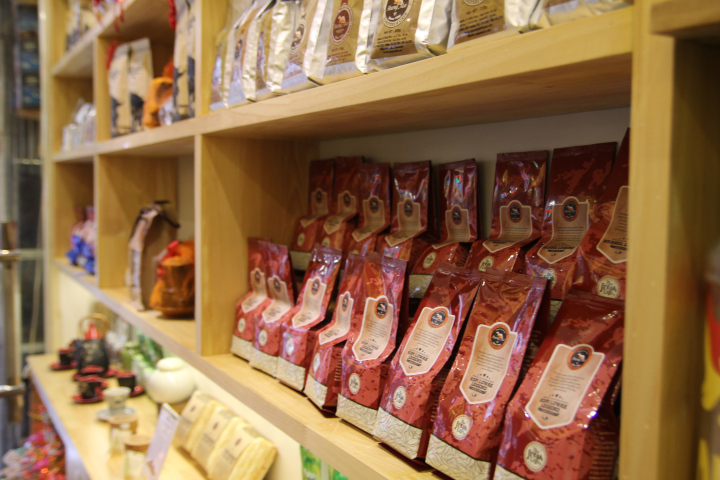
Love.
Related posts :
VIETNAM WEASEL COFFEE – THE TRUE STORY BEHIND THE WORLD MOST EXPENSIVE COFFEE
WHAT TO DO IN HANOI PART 3: BIA HOI AND VIETNAMESE COFFEE
WHAT TO DO IN HANOI PART 2: HANOI EATING
WHAT TO DO IN HANOI PART 1: STARTER 101
VIETNAMESE LOTUS TEA – HOW TO SERVE
HOW TO BREW COFFEE USING VIETNAMESE PHIN FILTER
VIETNAMESE LOTUS TEA – A QUINTESSENCE GIFT FROM HANOI
SHOPPING IN HANOI: HANOI OLDEST SHOPS
Hanoi Walking Street - A Popular Hotspot in the capital

